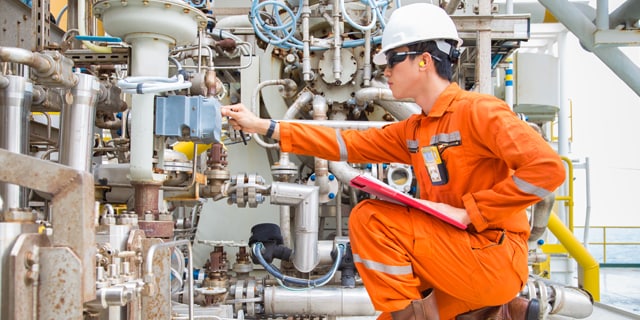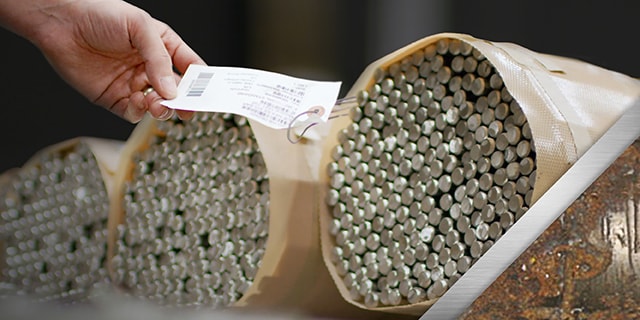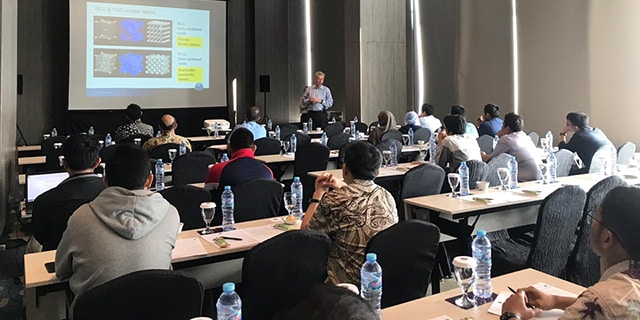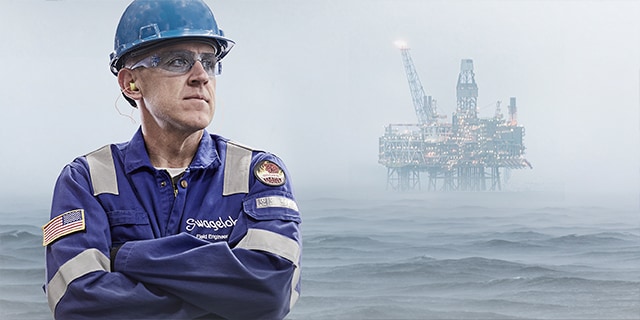What is Sour Service and Q&A on Material Selection

Four Answers on Material Selection for Sour Oil and Gas Fields
As oil and gas producers seek to meet the world’s energy needs and expand their revenue streams, there has been a collective move toward tapping unconventional resource reserves at greater depths and further distances offshore. Here, leaks due to sour gas or other serious system failures can have costly consequences. Process fluids in sour service contain hydrogen sulfide (H2S) which is known to be corrosive, flammable, and toxic. This corrosivity can push alloys to their limits and contribute to sulfide stress cracking (SSC) in higher-strength carbon steel and low-alloy steel. SSC can lead to material embrittlement and sudden failure of normally ductile metal alloys.
As the oil and gas industry taps into more reservoirs containing H2S, it’s critical to understand NACE standards to ensure materials can withstand such extreme conditions. One standard that guides the selection of alloys in sour gas applications is titled MR0175/ISO 15156. This standard contains tables that describe material requirements and environmental limits for materials used in upstream sour gas applications.
Understanding these requirements and knowing your material options can help control many types of corrosion, including those most prevalent in sour oilfields. We answer four common questions around material selection for sour gas applications so you can choose fluid system components that have a greater likelihood of performing safely and effectively.
Question #1: Which materials are compliant for use in sour gas applications?
The NACE MR0175/ISO 15156 standard describes suitable materials for sour environments in oil and gas production, including 316 stainless steel, 6 Moly alloys, 2507, 825, 625, C-276 and Alloy 400. These materials have specific application and environmental limitations which are listed in this standard.
No stainless steel is completely immune to chloride-ion induced stress corrosion cracking (SCC). When selecting tube fittings from 316 stainless steel, it is important to specify a higher nickel and chromium content than the ASTM minimum requirement of 10% nickel and 16% chromium. Tube fittings produced from off the shelf 316/316L stainless steel with minimum nickel and chromium content have been found to be more susceptible to chloride-induced stress cracking. Higher nickel content provides better overall corrosion resistance, improved austenite stability to martensite formation and higher resistance to hydrogen embrittlement. When material contains high amounts of martensite, hydrogen embrittlement causes the material to become brittle and susceptible to cracking. Higher chromium content provides higher resistance to pitting corrosion.
Question #2: What potential risks or damage can proper material selection mitigate?
Using the correct material in a sour gas application can reduce the risk of SSC and SCC. Once a material corrodes, material degradation can lead to potentially catastrophic failures that impact the environment, personnel and safety, and can cause unforeseen production costs. This risk mandates understanding the requirements of NACE compliance standards and specifications which are based on the environmental conditions in which the product will be used.
Question #3: What are key factors to consider when choosing the optimal corrosion-resistant material?
It’s important to consider the corrosive threats posed by the operating conditions (including start-up and shut-down), the resistance of candidate materials to these threats, and the access for maintenance and repair. Additionally, knowing the application pressure, temperature, chloride concentration, pH, and H2S partial pressure can aid in material selection. With proper materials science training, you can learn how to select optimal materials based on pressure and temperature ratings, corrosive threats, and compliance.
Question #4: How can NACE-compliant materials improve operational safety and performance?
Material degradation can lead to premature component failure that creates risk to personnel and property and can cause product contamination, resulting in the loss of production and high maintenance costs. Selecting the right material based on the environmental and process conditions in the application can help improve the longevity of assets, enhance performance safety, and prolong system integrity. Additionally, compliant materials also reduce the future need to re-work an asset that may have been built with non-compliant materials.
Material reliability is key as the oil and gas industry continues to tap into sour gas deposits. Special attention is required for corrosion-sensitive equipment like valves, fittings, and instrumentation. Adhering to the recommendations of NACE MR0175/ISO 15156 and having a clear understanding of alloy limitations is crucial for safe, long-lasting equipment in demanding sour gas environments.
Interested in learning more about how to choose the right-corrosion resistant materials to keep your fluid systems leak tight and operating efficiently? Register for one of our upcoming training courses.
Related Articles

Material Matters: Selecting the Right Material for Corrosion Resistance
An offshore platform can have nearly 50,000 feet of tubing, more than 20,000 fluid system components, no fewer than 10,000 fittings, and as many as 8,000 mechanical connections. No wonder choosing corrosion-resistant material isn’t easy. Learn how to make choices right for your application.

Why Materials Science Training Matters to Oil and Gas Instrumentation Engineers
Fluid system training is critical in oil and gas applications around the world. Learn more about how technical trainings can make a difference for your facility.

How Training Can Minimize Risk on Oil and Gas Platforms
Proper training on critical fluid system activities is important on oil and gas platforms. Learn how the right training can help prevent accidents.

